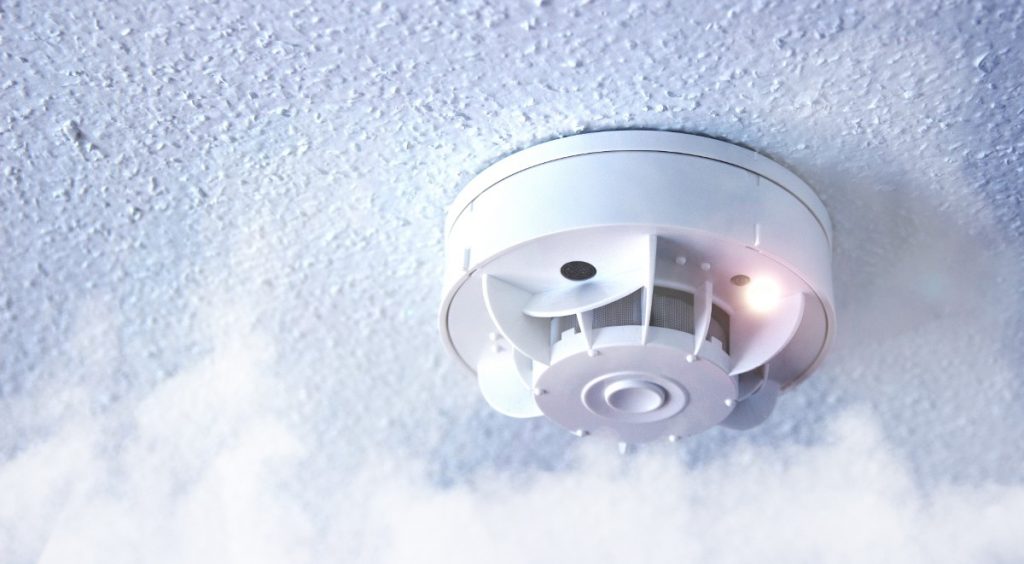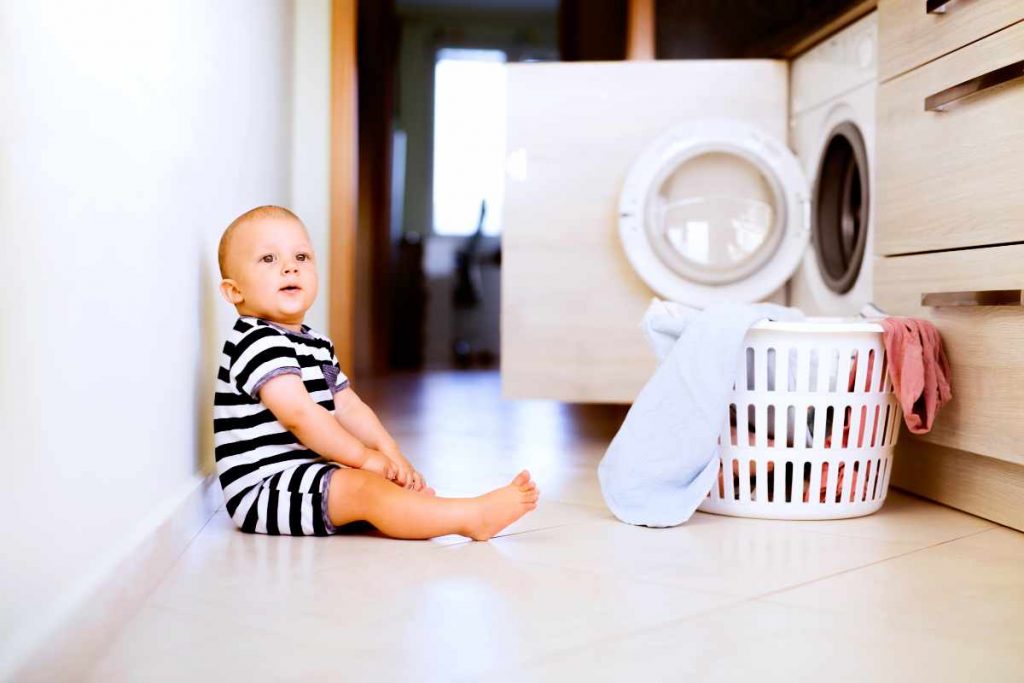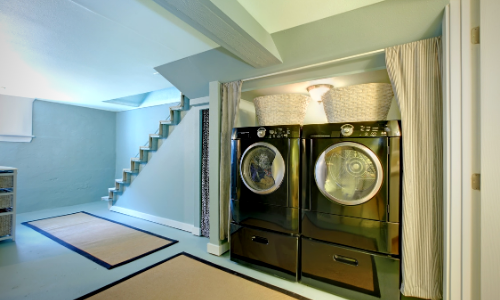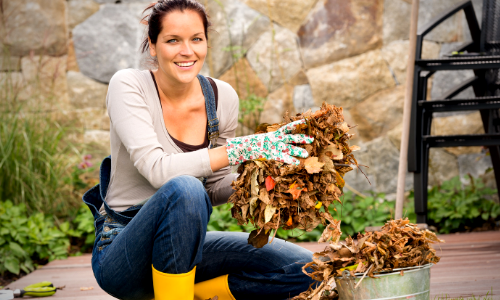Home Safety Checklist
Now is the time to start your spring home safety and maintenance projects. Here are some important items to check off your to-do list:

- Test your carbon monoxide and smoke detectors
Now’s a good time to make sure these important safety protections are in good working order. Dust both the carbon monoxide and smoke detectors with a dry cloth. Use the test button to check that they work, and replace batteries that are more than six months old. If an entire unit is beyond its printed expiration date, replace it. - Check and replace flashlight batteries
Springtime means thunderstorms and the potential for power outages in many areas of the US. Make sure all your flashlights have fresh batteries so you’re prepared for severe weather. - Check your fire extinguishers
Every home should have at least one fire extinguisher. Most extinguishers have a long shelf life, but be sure to check the expiration date. If it has not expired, check the pressure gauge to make sure it’s in the proper range. Also, keep your extinguishers where they are easily accessible if you need them. - Clean out household chemicals and cleaning supplies
Go through your cleaning supplies and other household chemicals to check for leaking containers and things you no longer use or need. Be sure to dispose of them properly and according to any local regulations. Be sure that everything you keep is being stored properly. - Clean out medicine cabinets and first aid kits
Take an inventory of everything in your medicine cabinets and properly dispose of any outdated prescriptions and over-the-counter medications. While you’re at it, look through any first aid or emergency kits and make sure to replace anything that’s been used, and dispose of anything that’s expired.

- Clean out your washer, dryer, and other major appliancesPull out your washer and dryer and clean underneath each, and surface clean both, too. Check the hoses on your washer for leaks. Use a vacuum hose attachment or a long, flexible brush to clean out the lint trap inlet and the vent pipe of the dryer. If your lint filter appears clogged, clean it with a nylon brush and water.
- Replace furnace filters and clean air conditioning ducts
Make sure your air conditioner is in good working order by reviewing the user’s manual for the proper spring maintenance procedures. It’s also a good time to replace furnace filters. - Clean and secure windows and doors
Spring cleaning wouldn’t be complete without window cleaning. And as you’re cleaning, check the locks and screens to make sure they’re in proper working order. Check the locks on all exterior doors too. - Make repairs to decks and patios
Inspect your deck or patio for loose railings and boards, as well as raised nails or screws. Make any necessary repairs to ensure safety before you start enjoying the warmer weather.
- Get your grill ready
Make sure your grill is clean and ready for barbecue season. If you have a gas grill, be sure to check all hoses and connections to make sure there are no leaks. Be sure that the handle on the lid is secure and that the igniter works, as well. - Take stock of recreational equipment
Make sure all of your playground equipment, bikes, skateboards, and any other outdoor toys are in safe working order before you or your family use them.
- Inspect your roof and clean your gutters
Inspect your roof for any damage that could leak during heavy rains or worsen from heavy winds. Make any necessary repairs. Check and clean your rain gutters and downspouts as well to avoid foundation problems during the rainy season. - Inspect the interior of your home for mold
Mold often grows in bathrooms, laundry rooms, and wherever there is moisture. It has a distinct musty smell and appears as dark, fuzzy spots on surfaces. Mold can be hazardous to your health if it spreads. Clean any mold you find with bleach, and try to identify the underlying cause and remedy it. - Manage electrical cords throughout the household
As you clean each room, make sure power cords and extension cords don’t present a tripping hazard or fire hazard. Inspect all cords for fraying or damage and get rid of any cord that is not safe. Electrical cords should not run under rugs or around doorframes; this can damage the cord and create a fire hazard.
Why Is Home Maintenance Important?
The end of winter and the start of spring means a return to warmer weather and outdoor activities, including spring cleaning! Spring cleaning can mean many things, but one of the most important reasons to spring clean is to take stock of your home and assess any problems or damage that arose over the winter.

Plus, it’s also a great time to purge unwanted possessions and prepare your home for the coming of warmer weather. You might not enjoy spring cleaning and spring safety preparation, but it’s essential to prepare your home for warmer weather and make sure that you and your family are safe. Proper spring safety activities can reduce the opportunities for injuries or accidents inside or outside your home.
Additionally, it also helps you minimize the chance of costly property damage as the warmer weather approaches.
Don’t Forget Your Basement and Yard on Your Home Safety Checklist
Check Your Basement for Sneaky Problems
Basements can be a source of many problems, but can sometimes be overlooked in a spring safety and cleaning regimen.

If your winter was particularly snowy or rainy, there may have been leaking or flooding in your basement that went unnoticed. Closely inspect your entire basement for signs of moisture, toxic mold, and foundation problems. If you find anything, call a professional to have it addressed immediately.
Attend to Your Yard
Landscaping can be an afterthought for some people, but it’s an important part of the spring cleaning and safety process. Yard maintenance is in fact a vital part of keeping your home safe during the warmer months.

- Trim trees to remove dead branches that are at risk of falling.
- Clean up the debris buried under piles of snow.
- Fill in any holes from animal activity.
- Trim bushes.
- Mow and treat your lawn.
Will Homeowners Insurance Cover Broken Household Items?
Various problems can cause home damage, from severe weather to simple wear and tear. The cause of any broken or damaged items or exterior elements of your home is the answer to when and how it will be covered by your home insurance.
Sudden, accidental damage is typically covered, while regular maintenance issues are not. Here’s how: The dwelling coverage portion of your home insurance policy protects your home’s structure from a variety of “covered perils,” or causes of loss.
Typically covered perils include fire, hail, wind, lightning, and so on. So if your roof is damaged by a severe spring thunderstorm, your policy would likely cover the necessary repairs. If any of the contents of your home are damaged or destroyed because of the damage caused by the storm, the personal property coverage portion of your home insurance policy would pay for repairing or replacing damaged possessions.

Perils Covered by Home Insurance
A wide range of perils are covered by home insurance, including many caused by spring weather or other seasonal occurrences.
Again, using a roof leak as an example, if your roof leak were caused by one of the following, your repairs would likely be covered:
- Fire or lightning
- Windstorms and hail
- Explosions
- Riot or civil commotion
- Aircraft
- Vehicles
- Smoke
- Vandalism and malicious mischief
- Theft
- Volcanic eruption
- Falling objects
- Weight of ice, snow, or sleet
- Accidental discharge or overflow of water from within a plumbing, heating, air-conditioning, automatic fire protection system, or from within a household appliance
- Sudden and accidental tearing apart, cracking, burning, or bulging of steam or a hot water heating system, an air-conditioning or automatic fire protective sprinkler system, or an appliance for heating water
- Freezing of a plumbing, heating, air-conditioning system or automatic fire protective sprinkler system, or of a household appliance
- Sudden and accidental damage from artificially generated electrical current
Add one more item to your spring home safety checklist: be sure to review your home insurance policy and talk to Mason-McBride to understand what is and is not covered.
Take Action to Safeguard Your Home
Contact an independent agent to review your coverage options or to get a quote started.
For helpful tips on other popular topics, check out articles on:
- How inflation Impacts Home & Auto Insurance
- Understanding Your Home Insurance Declaration Page
- Do You Need Flood Insurance in Michigan?
- Personal Injury Protection & Qualified Health Letters
Article resources provided courtesy of TrustedChoice.com
